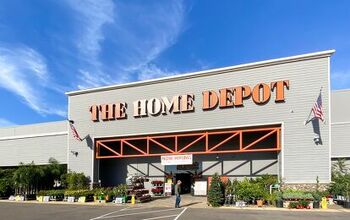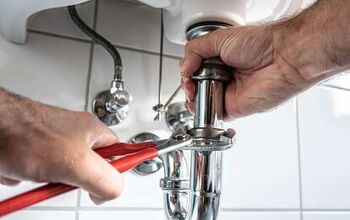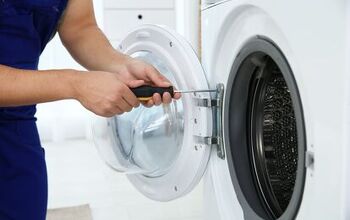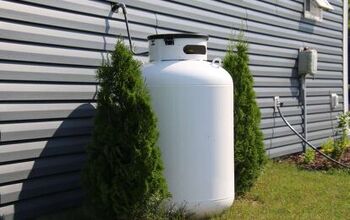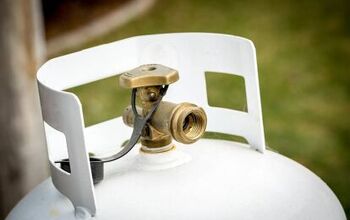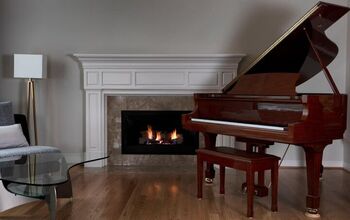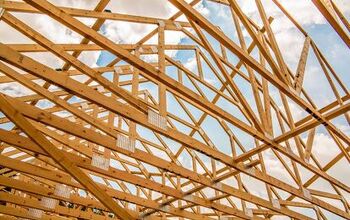Gas Fireplace Efficiency Vs. Furnace: Which One Is Better?

When winter season rolls around, many homeowners find themselves wondering if it’s more fuel-efficient to run their gas furnace or huddle around their gas fireplace. It’s logical to want to consider all the ways that you can minimize costs when heating your home. Unlike electric fireplaces, gas fireplaces produce a lot of heat, so would using it instead of your furnace help you save money?
Before gas fireplaces were invented, furnaces would win the battle of efficiency. Wood is expensive, requires persistent supervision, and emits ash and soot into the home. In terms of convenience, you would opt for a clean-burning gas furnace over a wood-burning fireplace. However, now that gas fireplaces are in the mix, the answer is a bit more complicated.
Operating your gas fireplace with or instead of your furnace may be a good idea, depending on your lifestyle, the temperature you’re most comfortable with, and the efficiency of your fireplace. Overall, modern furnaces tend to be more efficient than gas fireplaces. However, there isn’t really a one-size-fits-all answer when you compare gas fireplace efficiency vs. furnace efficiency.
Both options offer a number of advantages, and the choice of whether you should opt for your gas fireplace or furnace may come down to personal preference, the size of your home, and the design of your home. Although, some of the main factors you should consider include BTU ratings, efficiency, and reliability.
Do You Need a Heating and Cooling Contractor?
Get free, zero-commitment quotes from pro contractors near you.

Understanding British Thermal Unit
Heating power is measured in terms of British Thermal Units, or BTUs. One unit equals the amount of heat needed to raise the temperature of a pound of water by one degree Fahrenheit. As a homeowner, BTU ratings are an excellent resource for finding out how powerful your furnace or fireplace is.
Though, it’s important to note that, the BTU rating of a furnace may not be directly comparable to the BTU of a particular fireplace due to the differences in operation. You can typically find the BTU rating in the appliance manual or on the appliance’s label. It will often consist of two numbers – one indicating the BTU consumption when the appliance is on the highest setting and the other for when it’s on the lowest setting.
The typical gas fireplace may produce around 30,000 BTUs and a furnace could create more than double that amount. Though, you may only require 30,000 BTUs to heat the space your fireplace is in. While you might assume that the lower the consumption rating, the more efficient the appliance. However, there is more to consider.
Understanding AFUE
Annual Fuel Efficiency Ratio, or AFUE, measures a direct ratio of fuel consumed to heat distributed. When it comes to measurements of efficiency, this is often one of the greatest determiners for what will give you the most bang for your buck. It essentially determines how much fuel the appliance translates into heat, while the rest is wasted.
Fortunately, furnaces have a lot going for them in terms of AFUE – depending on the specific model. Most standard units will yield about 80% AFUE, meaning 80% of the fuel used is translated directly into usable heat. Though, there are a number of high-efficiency models that are considerably more superior, with some reaching 98.2% AFUE.
When it comes to gas fireplaces, on the other hand, they tend to be less efficient overall. The standard AFUE score for gas fireplaces sits around 70%. The main reason they have a lower rating than furnaces is that the fireplace must produce a larger flame. This means that the unit releases more energy as light instead of heat within the fuel during combustion.
Zone Heating
Zone heating is when you allow different “zones” in your home to be set at different temperatures. This is very common when using a smart thermostat, as they are connected to a zone heating system. The thermostat monitors where you are only heating the areas of the home you are in. Meanwhile, the other “zones” are kept colder, which can save you both energy and money.
This same idea can be applied to your fireplace. When you turn on your gas fireplace, you’re not expecting it to heat your entire home. Instead, the goal is to remain in the vicinity of your fireplace’s warmth and allow the rest of your home to be cold. You can also use your fireplace alongside your furnace, by turning on your furnace at a low temperature and using your furnace to warm a specific zone to a more comfortable temperature.
As the central heating source, a furnace distributes heat across your entire home and even rooms that are not in use. The cost of operating a furnace for one hour at between 75,000 and 100,000 BTU is $1.12 to $1.49 on average. Meanwhile, the cost to run a natural gas fireplace at 30,000 BTU is 45 cents an hour. Financially, it makes sense to reduce furnace output whenever possible and heat your most frequently used homes with your gas fireplace.
By adding a gas fireplace to your living room, homeowners can heat the area that they spend the most of their time in. If the living room is in the lower level of your home, you can even enjoy the advantage of the natural heat rising to heat the other levels of your home.
What Type of Furnace is the Most Efficient?
When you’re comparing the efficiency of a gas fireplace to a furnace, it’s important to understand that there are four main types of fuel for furnaces: gas, oil, electricity, and propane. While that may sound like there are a lot of options to choose from, only two of these fuel types are competitive in terms of cost efficiency: electricity and gas. Propane and oil are typically used when your home doesn’t have access to natural gas, or you need a furnace that will function during an outage.
Between gas and electricity, gas tends to be the more efficient to operate, while electric units are more affordable upfront. If you plan on using your heater a lot during the winter, gas will always outperform electricity.
Differences in Reliability
Fortunately, the highest-quality furnaces out there today are more reliable than ever. However, nothing quite compares to the reliability of a fireplace. With fireplaces, there is minimal risk that the appliance will fail to operate or require extensive repairs.
Operating a fireplace is as simple as burning fuel to generate heat. On the other hand, a properly maintained furnace can last you many years, especially with routine professional tune-ups.
Additional Considerations
Since fireplaces and furnaces are considerably different appliances, there are other considerations to be made when comparing the two.
- Aesthetics: Of course, no one chooses a furnace because of the aesthetic appeal it offers. These appliances are always tucked away in your basement or a small room. Whereas, fireplaces can offer a lot of visual appeal, creating a cozy, warm, and charming environment in your living space.
- Frozen Pipes: In the winter, if the temperature goes too low, there is the possibility that your pipes could freeze. This is a serious concern that can result in very costly repairs. Fortunately, since the furnace distributes heat throughout your home it does a great job at preventing frozen pipes. A fireplace, on the other hand, does not deliver enough heat or even reach the necessary areas to avoid this costly disaster.
Gas Fireplace Efficiency vs. Furnace Efficiency
In comparing the most efficient types of furnaces and fireplaces (gas furnaces and gas fireplaces), it ultimately comes down to what you’re looking to accomplish. If you want to heat a specific room, your fireplace excels at this job. However, if the goal is to heat multiple rooms, a furnace is the better option. A fireplace cannot transfer heat to the other rooms in your home and will likely end up drastically increasing the temperature in one room and have a minimal impact on the rest of the house.
However, the main problem with furnaces is that some of the heat produced will ultimately be lost in your ductwork. Meanwhile, the heat produced by a gas fireplace is directly delivered into your home and can be measured. Since you can’t measure the heat-loss ratio of your gas furnace, it can be difficult to directly compare the efficiency of a fireplace to the efficiency of a furnace.
In most cases, it is more efficient to have your fireplace on since it won’t lose any heat traveling in your ductwork. Though, this means that the heat will be localized and cannot provide warmth to your entire home. With that said, if warming your entire home is what you’re looking to do, you’re better off using your furnace.
Do You Need a Heating and Cooling Contractor?
Get free, zero-commitment quotes from pro contractors near you.

Related Questions
Are gas or wood-burning fireplaces more efficient?
Gas burning fireplaces are more energy-efficient than wood-burning fireplaces, as only 20 percent of the energy created is wasted with gas. Wood-burning fireplaces, on the other hand, waste about 60 percent of energy.
What is the most efficient type of gas fireplace?
Direct-vent gas fireplaces are known for their efficiency, as about 70 percent of the heat they generate stays in the home.
Related Guides

Jessica considers herself a home improvement and design enthusiast. She grew up surrounded by constant home improvement projects and owes most of what she knows to helping her dad renovate her childhood home. Being a Los Angeles resident, Jessica spends a lot of her time looking for her next DIY project and sharing her love for home design.
More by Jessica Stone










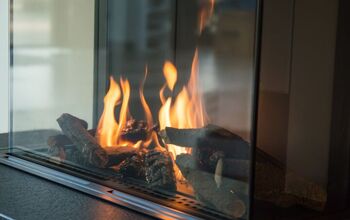
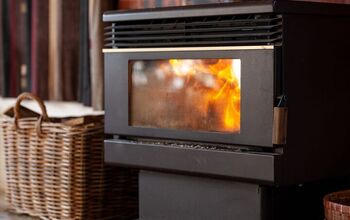

![The 5 Best Angle Grinders – [2022 Reviews & Buyer's Guide]](https://cdn-fastly.upgradedhome.com/media/2023/07/31/9071326/the-5-best-angle-grinders-2022-reviews-buyer-s-guide.jpg?size=350x220)
